Our acupuncture team at Raja Wellness provides a diverse set of experiences and skills. As the owner and clinical director, I have made it a point to find others who share my work ethic and passion for healing. In addition, I look for a diverse skill set. I wanted to take a moment to review our dynamic and exceptionally talented team.
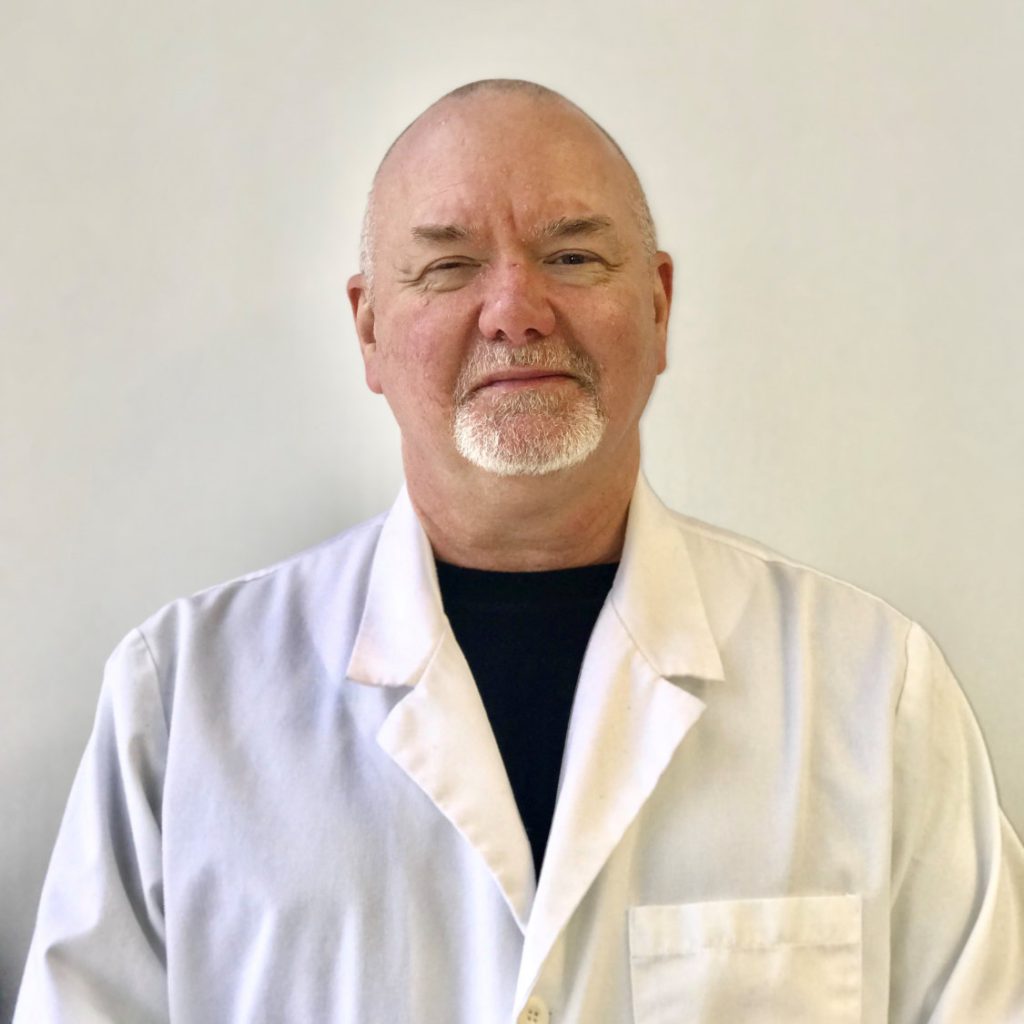
Robert Cecil, LAc - Robert has a passion for healing and a talent for orthopedic and neurological issues. He works with a lot of our veteran patients addressing a diverse range of conditions from chronic pain to neuropathy to PTSD. In addition, his experience with Frequency Specific Microcurrent and Estim scar release techniques provides additional healing modalities in addition to acupuncture.
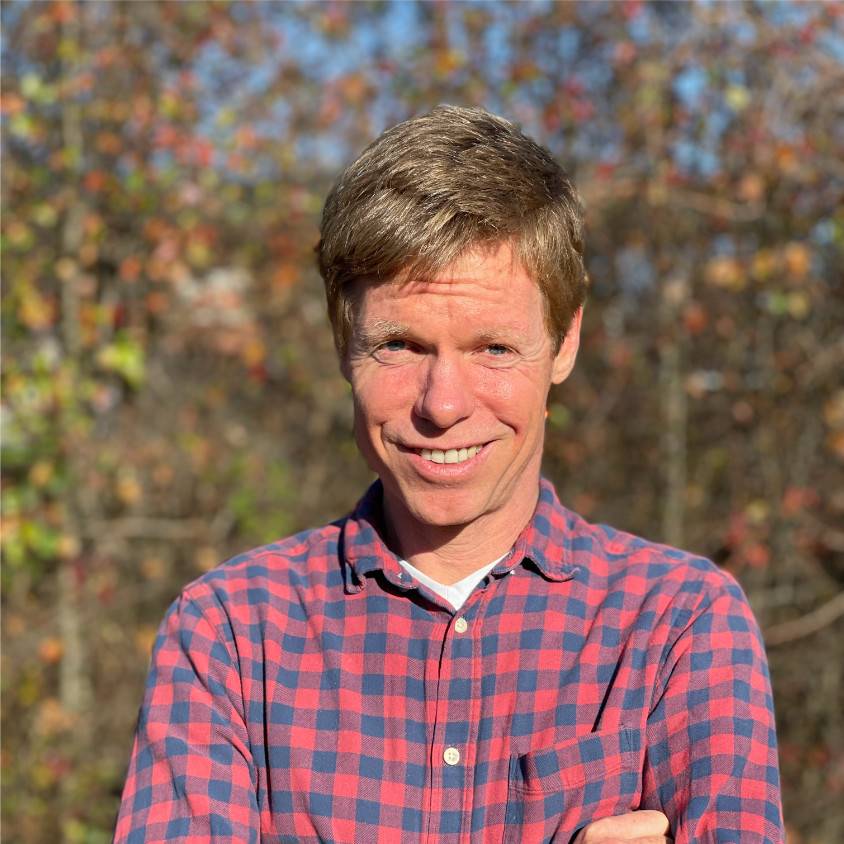
Fielding Carroll, LAc - For those dealing with chronic digestive disorders such as Chrohns and IBS, Fielding has developed a unique approach combining personalized nutritional therapy with acupuncture to help people radically change their digestive health. Patients report relief from decades-long issues after only a handful of treatments. He is also skilled in Soliman’s Auricular Allergy Treatment (SAAT), offering significant allergy relief from conditions like Alpha-Gal.
Our newest member, Jason Macko, LAc is trained in the 5 element technique, offering a gentle and integrated approach to complex conditions. In addition, he will be part of our team offering SAAT for Alpha Gal and other allergies. He is passionate about helping athletes optimize their performance and recover quickly from injuries. He is also skilled at handling complex cases and helping people reach optimal health.
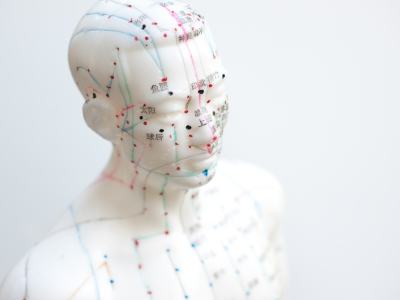
Together, we offer a wide range of expertise and services to address the mental and physical well-being of our patients. Considering acupuncture as part of your healthcare regimen can be a transformative step toward holistic wellness! By seeking the expertise of a skilled acupuncturist, you embark on a journey to balance and restore harmony within your body, mind, and spirit. Whether you're seeking relief from pain, stress reduction, chronic issues, or overall health improvement, acupuncture offers a gentle yet effective approach rooted in ancient wisdom.
Your path to optimal health starts with a visit to an acupuncturist—discover the profound healing potential of acupuncture today!
Yours in Health,
Jenny-Marie Greenough, LAc
Acupuncture has gained popularity recently for its benefits in improving immune system function. This holistic approach involves the insertion of thin needles into specific points on the body to stimulate energy flow and restore balance. While acupuncture is commonly known for its effectiveness in pain management, it also offers numerous advantages for boosting the immune system.
One of the primary benefits of acupuncture is its ability to reduce stress levels. Stress has a significant impact on the immune system, weakening its response to pathogens and increasing the risk of illness. Acupuncture helps to regulate the body's stress response by promoting the release of endorphins, which are natural painkillers and mood enhancers. This, in turn, reduces stress and anxiety, allowing the immune system to function optimally!
Furthermore, acupuncture has been found to enhance the production of immune cells, such as natural killer cells, which play a crucial role in defending the body against viruses and cancer cells. A study published in the Journal of Traditional Chinese Medicine found that acupuncture increased the activity of natural killer cells, suggesting its potential to improve immune system function.
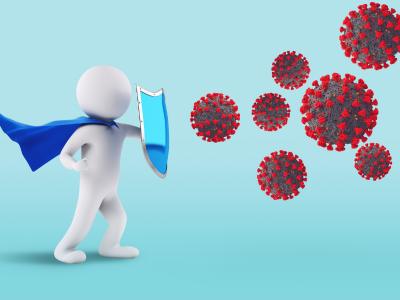
In addition to boosting immune cell production, acupuncture also improves circulation. The flow of blood and lymphatic fluid is essential for the proper functioning of the immune system, as it helps transport immune cells and nutrients throughout the body. By stimulating specific acupuncture points, blood circulation is enhanced, allowing immune cells to reach their destinations more efficiently.
Moreover, acupuncture has been shown to regulate inflammation, a key factor in immune system function. Chronic inflammation can impair immune responses and lead to various health conditions. Research published in the Journal of Neuroimmunology demonstrated that acupuncture can modulate the production of inflammatory cytokines, reducing inflammation and promoting a balanced immune response.
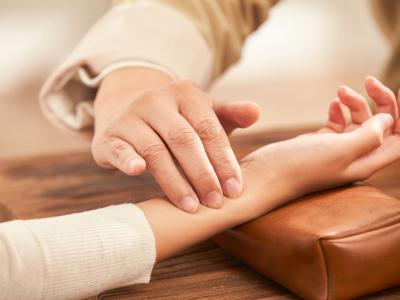
In addition to the benefits above, acupuncture has been known to also assist with other things that may contribute to improved immune function:
Balancing Energy Flow (Qi): According to traditional Chinese medicine theory, acupuncture helps balance the flow of vital energy, or "Qi," through the body's meridians. When Qi flows smoothly, it is believed to support overall health, including immune function.
Stimulating Lymphatic Flow: The lymphatic system plays a crucial role in the immune response by filtering out toxins and waste products. Acupuncture may help stimulate lymphatic flow, aiding in the removal of these substances.
Improving Sleep Quality: Quality sleep is essential for a healthy immune system. Acupuncture may help improve sleep patterns and address conditions like insomnia or sleep disturbances that can weaken the immune system.
Supporting Organ Function: Acupuncture is believed to influence the function of specific organs, which can indirectly impact immune health. For example, the spleen is considered important for immune function in traditional Chinese medicine, and acupuncture may be used to support its function.
It is important to note that acupuncture should not be considered a standalone treatment for immune system disorders or diseases. It is most effective as a complementary therapy alongside conventional medical treatments. Consulting with a qualified acupuncturist and healthcare professional is crucial to ensure a comprehensive and personalized approach to immune system support while supporting your specific needs and goals.
Book an appointment HERE with one of our highly qualified Acupuncturists today!
References:
1. National Library of Medicine: Acupuncture and Immunity
It’s looking like Newvember with all the great changes we have coming!
Raja Wellness welcomes Fielding Carroll, LAc! Those of you coming in to see us for allergy treatments recently have probably already met Fielding. Fielding is a native Kentuckian and a classmate of mine from Acupuncture school. I am happy to welcome him aboard to our team! He’s been diligently learning the nuances of SAAT (our specialty acupuncture technique for alleviating allergies of all kinds that was pioneered by Dr. Soliman). In addition to his focus on mastering this new technique, he brings a wealth of experience in the treatment of digestive disorders and health coaching embracing food as the first medicine and foundation of better health! In addition to offering acupuncture services, personalized nutritional coaching is also available with Fielding.
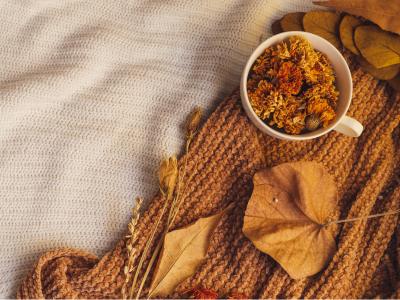
Fall wellness is a frequent topic for us—as the days get shorter and colder, it’s important to fuel our immune systems with adequate rest, plenty of fresh fruits and veggies and to reduce junk foods from our diet. Our gut and immune systems are intimately intertwined and for some people, probiotic support may be helpful in addition to meditation, immune-supporting herbs, and preventative acupuncture care.
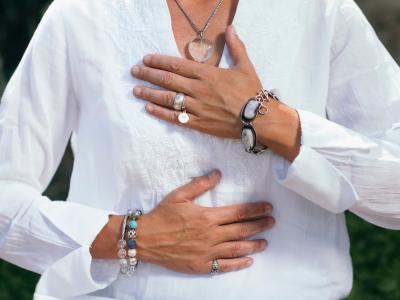
As we move forward toward 2024, we want to let our patients know our prices will be going up. We strive to offer a range of services at affordable prices and as part of that commitment, we are announcing this change early to give patients the option to “stock up” on treatments at our current price. All patients currently scheduled will pay the price at the time their service was booked. Current patients can pre-pay up to 5 visits each at our current rates, but those visits must be used before Mar 31, 2024. Our new prices will go into effect Dec 1, 2023 for all visits booked after that date.
In addition, you will see some new options in our services including nutrition coaching with Fielding, FSM-only treatments, BrainTap sessions & Glow sessions (combined light therapy & FSM for renewed skin). With those new options, we are also testing out some membership options, giving patients access to a select combination of treatments monthly at a reduced cost for members. Watch your emails for early access to these!
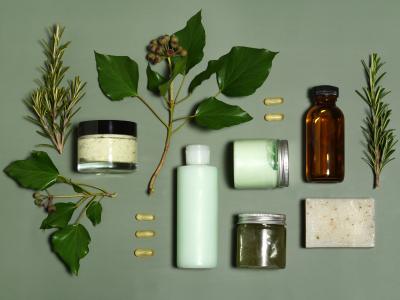
Our online store is also coming back soon with some changes!
At Raja Wellness, we continually strive to make your shopping experience as easy and affordable as possible.
CBD is legal in all 50 states, yet some banks and credit card processors impart their judgments on access to these legal products by refusing to process transactions involving the sales of CBD products of any kind. Their oversight unfortunately incorrectly flagged our blog about the health benefits of CBD for osteoporosis as a “product for sale” and our processor held our funds and thus forced us to stop using them as a processor. This has been a gray area for many years and is one of the reasons you see CBD in our offices but not in our online store. Unfortunately, the list of companies that allow this is very short. Please bear with us as we continue to search for a more fair, CBD-friendly payment processor that also allows us to offer you the best prices and convenience.
Millions of women suffer from gynecological complaints each year. Endometriosis (11% of women in the US) and fibroids (26% of women in the US) are two of the most common and painful issues women face. That’s over 30 million women in the US alone and these numbers are arguably under-reported as many less severe cases are often dismissed as PMS, depression, or part of some other syndrome. Conventional biomedicine has little to offer women in these cases beyond hormone therapies (often with intolerable side effects) or surgical options that can scar and affect future fertility, or as a last-ditch effort—simply offering a hysterectomy (often taking the ovaries as well) and throwing the woman into early menopause. Symptoms of these conditions can be painful and quite literally, draining, as women struggle with heavy, unrelenting bleeding.
These are not conditions new to women. Endometriosis was first identified 300 years ago in Western medical texts, but references to the condition trace back over 4000 years under the older diagnosis “hysteria”. Similarly, uterine fibroids have a long history. Uterine fibroid lesions were initially known as the “uterine stone.” In the second century AD, they were called scleromas. The term fibroid was first introduced in the 1860s. Uterine fibroids are the most common pelvic tumors among women of reproductive age, affecting more than 70% of women worldwide, particularly women of color”1. It is not surprising traditional medicines have ways to treat these conditions.
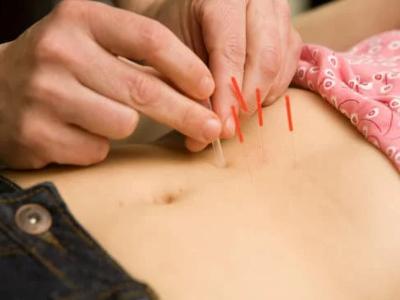
In my practice I have found acupuncture and herbs together provide the best treatment outcomes for these conditions, and if only one can be used, the herbs are the more important piece (although it takes longer for them to achieve the same results when used without acupuncture). Fortunately, I have been able to work with patients who not only were able to report their progress through improvement in their physical symptoms but also provided me with ultrasounds and other diagnostics from their OBGYNs.
In one case of a woman in her 40s—her uterine fibroids shrank on average more than 7mm each in a 3-month period, and after 6 months had no visible blood supply. She was no longer a candidate for surgery as her fibroids were effectively “cured”. 4 years later, even without maintenance herbs—her fibroids have not returned. Her heavy periods, severe abdominal pain and fatigue are a thing of the past.
In another case, a woman in her 20s came in for endometriosis and fibroids. Hormone therapies had failed and she was hoping to retain her uterus and chances to have children in the future but she was living with crippling pain that radiated from her abdomen to her back. She described it as “living with barbed wire wrapped around her torso and her spine—like I am being torn from the inside out”. In addition, she had fibroids and chronically heavy periods resulting in fatigue and anemia. To top it all off, she dealt with the emotional stress of the constant pain and fear of losing her chances at motherhood. Within 3 months of treatment, her periods were more normal and the pain was no longer constant but limited to around ovulation and onset of her menses. At 6 months, her cycles were normal and she was pain-free! She had follow-up imaging to evaluate her need for surgery and while endometrial tissue and fibroids were still present, the fibroids were visibly smaller and the endometrial tissue appeared less pervasive on imaging than it had 6 months before when she started treatment. At 9 months she was due for laparoscopic surgery to remove some of the endometrial tissue, and remarkably only 40% of the expected tissue was found and the fibroids were 70% smaller than on the initial imaging. The doctors were able to remove the excess endometrial tissue and fibroids easier than expected. 6 months later she was pregnant with her first child and now has a happy, healthy little girl, and her cycles continue to be normal.
Cases like these highlight why herbs and acupuncture have been used for thousands of years. Together they help women optimize their health safely and effectively. In combination with modern medical techniques, they can give even the most severe cases relief. I highlight the second case in particular because I don’t believe the herbs and acupuncture alone could have reduced the damage enough to help her get pregnant—perhaps if we had started the herbs years earlier before the progression was so severe. It’s important to work with all available resources for optimal health care. So please, if conventional treatments have failed or you want a more natural alternative—find an experienced acupuncturist and herbalist to work with!
Call us at 270-506-3853 or click here to book an appointment today!
1 Qiwei Yang, Michal Ciebiera, Maria Victoria Bariani, Mohamed Ali, Hoda Elkafas, Thomas G Boyer, Ayman Al-Hendy, Comprehensive Review of Uterine Fibroids: Developmental Origin, Pathogenesis, and Treatment, Endocrine Reviews, Volume 43, Issue 4, August 2022, Pages 678–719, https://doi.org/10.1210/endrev/bnab039
In honor of Black History Month, I wanted to share some of the stories of how acupuncture came to be a legitimate practice in the US largely through the activism of some unlikely proponents—the Black Panthers and the Young Lords. Our medical history is full of examples of people of color being exploited by the medical industry, of people suffering in experiments because it was assumed their skin color prevented them from “really feeling pain” and other abominations that continue in less obvious ways to impact access to effective and safe health care for people of color. It took radical, focused, and illegal actions to improve access to health care for people of color in New York, and the Lincoln Detox Center still stands as an inspiring story of community activism for positive change. The model of the Lincoln Detox Center for treating addiction still stands as the gold standard for effective treatment.
In the 1970s acupuncture went from something in the back alleys of Chinatowns across the US to a vital element in community clinics founded and run by leaders in the Civil Rights community and became a subject of national interest after Henry Kissinger’s seminal trip to China, where doctors demonstrated acupuncture anesthesia during surgery. In 1974, California became the first state to openly license acupuncture after public outcry following the arrest of Dr. Miriam Lee. If it hadn’t been for the very public use of acupuncture in these community clinics and building awareness of the efficacy of acupuncture, I doubt the public outcry would have been very loud, and acupuncture might still be unregulated (as it is in a handful of states including Alabama, Oklahoma, and South Dakota). Thanks to these pioneering efforts, acupuncture has become recognized as a primary treatment option for pain, addiction, anxiety, and more.
Of note, at that time in China, acupuncture was part of an outreach to provide basic health care to the poor, rural regions of the country as part of the Barefoot Doctors. Elements of the traditional practices of acupuncture had been simplified into a standardized practice by Chinese physicians called “Traditional Chinese Medicine”, which is the foundation of most acupuncture training here in the US. One doctor who was on one of these trips to China, Tolbert Small, MD observed the acupuncture demonstration and asked for treatment for himself. He was intrigued enough to ask for more information. He was able to record 4 hours of lecture on the use of acupuncture and estim (electrical stimulation), procure some needles and an estim machine, and proceeded to practice on himself and his family after his return from China. Back in Oakland, he obtained an English translation of a Chinese Medicine text to study and expand his understanding of acupuncture.
He then incorporated acupuncture, mostly electro-acupuncture, into his practice in his community clinic and pioneered the use of acupuncture for the treatment of the symptoms of sickle-cell anemia. Dr. Small primarily used acupuncture to treat various kinds of pain. He was also pivotal in bringing national awareness to the plight of people with sickle-cell anemia and garnering more funding for testing and research of treatment. He even used acupuncture to ease his wife’s labor pains during two of her deliveries and may have been the first MD to do so in the US. To learn more about Dr. Small, I recommend this interview.
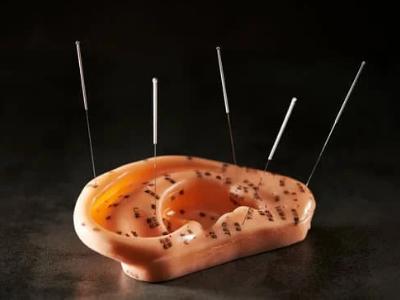
On the other side of the country in the South Bronx, Matulu Shakur (stepfather of Tupac Shakur) was one of the providers in the Lincoln Detox Center who heard about acupuncture for the treatment of addiction in Hong Kong in a New York Times article, and took an interest. He went to Chinatown to purchase acupuncture kits and books from doctors, then went to Montreal for training. There he studied how to treat addiction with acupuncture and later traveled to China, Switzerland, and other countries where acupuncture was used more openly. He was later licensed in California as an acupuncturist and founded an acupuncture school in the Bronx. His work along with those like Michael O. Smith, MD, DAc, lead to the development of the NADA protocol—a simple 5-point ear acupuncture protocol that is now used throughout the country for the treatment of addiction.
The Lincoln Detox Center was also notable for the development of the first patient bill of rights—changing the relationship between doctor and patient to protect patient rights and give them a voice in their care. Cleo Silvers, while not an acupuncturist, was a community organizer and advocate who was instrumental in authoring the patient bill of rights to ensure patients had access to quality care, their medical records, and the right to not be experimented on without their knowledge or consent—things that were grossly lacking especially among patients of color that we now take for granted.
Another key leader in the Lincoln Detox story was Richard Taft, MD; who was likely murdered during his tenure, though his death was staged to look like a suicide. He was working to publicize the dangers of methadone and promote acupuncture and other treatments for true detox at the time of his death. Today acupuncture continues to provide a safe alternative to methadone in the treatment of addiction, while at the same time continuing to be underutilized in many treatment centers and not readily accessible for the people who most need it. It is my hope that as awareness grows, access to acupuncture becomes a standard practice for addiction for all people.
When it comes to the heart and the question of “Can Acupuncture really help with that?” the answer is a resounding yes! From angina to issues of rhythm and blood flow, there is ample research to show acupuncture helps with no documented adverse effects during study periods—even with severe heart diseases.
Acupuncture as an adjunctive therapy improves treatment outcomes and pain relief for patients with Coronary Artery Disease (CAD) related angina. We’ve seen this repeatedly in our clinic as well.
Atrial Fibrillation (Afib): 1x weekly acupuncture for 12 weeks showed improved structural remodeling of the heart in patients with afib. This was fascinating to me, as I knew regular acupuncture of 2-4x per month extended the time between problems my afib patients had by 50-70% over what they experienced before acupuncture; but to learn it helped positively remodel the structure of the heart?!?! That’s huge!
Acupuncture has consistently been shown to increase blood flow and exercise tolerance in patients with chronic heart failure. This reduces stress, helps maintain a healthy weight and immune function, and improves patient quality of life without negative side effects!!
There are some well-understood mechanisms at play here such as the ability of acupuncture to regulate the balance of the sympathetic nervous system and vagus nerve, to help increase peripheral circulation, and to improve patient well-being; but to see that acupuncture is positively changing cell-signaling and structure of the heart itself shows there is much more than just a placebo effect going on. So yes, acupuncture helps. We even have some incredible herbs available to support and enhance treatments.
The bad news: Acupuncture isn’t a miracle cure (nothing alone is!). I probably sound like a broken record to some of my patients at this point, but for all the wonderful things we can do with acupuncture, herbs, and FSM to help with heart health—the choices you make at home each day about what foods you eat (or don’t eat) and what you do for stress management are critical to successfully managing and possibly even reversing heart disease. If you are taking blood pressure meds, cholesterol meds, or diabetes medicines, you aren’t healthy—you are masking an underlying disease process that will negatively impact your quality of life (if not the quantity of it as well). All the acupuncture in the world can’t overcome bad food choices. So to encourage heart health, we are including an eating guide to help you as well as resources for more help if you need it! And while you fix your diet, let acupuncture help you along the way!
1 https://www.ncbi.nlm.nih.gov/pmc/articles/PMC8778603/
2 Kristen AV, Schuhmacher B, Strych K, Lossnitzer D, Friederich HC, Hilbel T, Haass M, Katus HA, Schneider A, Streitberger KM, Backs J. Acupuncture improves exercise tolerance of patients with heart failure: a placebo-controlled pilot study. Heart. 2010 Sep;96(17):1396-400. doi: 10.1136/hrt.2009.187930. Epub 2010 Jun 15. PMID: 20554511.
3 Middlekauff HR, Hui K, Yu JL, Hamilton MA, Fonarow GC, Moriguchi J, Maclellan WR, Hage A. Acupuncture inhibits sympathetic activation during mental stress in advanced heart failure patients. J Card Fail. 2002 Dec;8(6):399-406. doi: 10.1054/jcaf.2002.129656. PMID: 12528093
A frequent question we get in the clinic is “Can you get me off my diabetes medicine?" The simple answer is “no”. Acupuncture and herbs alone are potent allies in healing, but especially with diabetes, the choices you make each day have far more impact than anything anyone can give you. The more complete answer is “it depends”:
It is also important to know that we cannot make changes to prescription medications, so it’s important to work with your doctor as well as your acupuncturist when you decide that you are ready to make the changes you need for better health.
So why try acupuncture and TCM for diabetes?
Acupuncture and herbal medicine are not a “one-size fits all” treatment approach—each patient is unique and we chose our specific formulas and acupuncture points for each patient based on the presentation of the entire patient; not just a set cookie-cutter treatment. As a result, not only do we see the diabetes symptoms improve, the patient experiences better health overall. By choosing the right approach for each patient we avoid the spiral of “take this medication for this, and this medication for that, and this medication for the side effects of the first medication and yet another medication for the side effects of the second medication….” that so many patients experience.
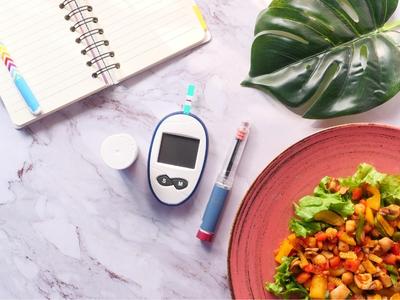
Now as to the pesky diet and exercise thing:
If you continue to overload your body with too much of the wrong foods and not enough of the right exercise—even the best treatments and formulas, plus the medications your doctor prescribes—won’t be enough to keep the disease from progressing!
I highly recommend anyone who has diabetes or even a risk factor for diabetes (which is pretty much everyone) read “Why We Get Sick” by B. Bikman. It’s a great book based on solid research that helps you understand what happens with diabetes and more importantly, what you can do to change it. If you need help getting off the sugar, we have amazing and compassionate coaching and nutrition partners who can help you!
Follow Raja Wellness on Facebook and Instagram!
Follow Raja Goods on Instagram!
Sources:
1 Wang KX, Liang FX, Chen S, Luo ZH, Chen B, Chen ZQ, Zhang YL, Chen J, Gu XL, Zhou T, Yan P, Xu XY. Effect of electroacupuncture of "Biao-Ben" acupoints on renal function and hemorheology and eNOS level in patients with early diabetic nephropathy. Zhen Ci Yan Jiu. 2022 Jan 25;47(1):46-52. Chinese. doi: 10.13702/j.1000-0607.20210036. PMID: 35128870.
2 Wang H, Chen X, Chen C, Pan T, Li M, Yao L, Li X, Lu Q, Wang H, Wang Z. Electroacupuncture at Lower He-Sea and Front-Mu Acupoints Ameliorates Insulin Resistance in Type 2 Diabetes Mellitus by Regulating the Intestinal Flora and Gut Barrier. Diabetes Metab Syndr Obes. 2022 Jul 30;15:2265-2276. doi: 10.2147/DMSO.S374843. PMID: 35936053; PMCID: PMC9348137.
3 Dimitrova A, Murchison C, Oken B. Acupuncture for the Treatment of Peripheral Neuropathy: A Systematic Review and Meta-Analysis. J Altern Complement Med. 2017 Mar;23(3):164-179. doi: 10.1089/acm.2016.0155. Epub 2017 Jan 23. PMID: 28112552; PMCID: PMC5359694.
Let’s face it, acupuncture doesn’t always have the best public image. People think of Kungfu Panda or Pinhead—needles randomly poking everywhere. Or maybe they’ve been on Instagram and seen some photos and videos of poorly done dry needling (through clothing, dangerous needle placement over organs, etc) and equate that with acupuncture. Who wants to risk an infection or organ puncture—no thank you! Then someone says they are going to stick needles in your ears and help you feel better—truly, I understand the skepticism! Now, let me break down some of the mysteries.
Acupuncture isn’t a singular practice. There are dozens of different systems and styles and a myriad of variations among those. Acupuncturists have many resources to address your issues with those tiny little needles. One of these systems is Auricular (Ear) Acupuncture. Amazingly the entire body, internal and external, including the emotions are reflected in the ear.
Don’t believe it? Here are some photos and video of the changes one patient experienced after having her knees locked straight for years after her bilateral knee replacement. This immobility in her knees made it hard to walk, and uncomfortable to sit; caused problems in her knees, hips, back, and feet…and repeatedly she was told her case was hopeless. Even trying to force the knees to bend under sedation didn’t work. She originally came to see me for allergies (also resolved), but her knees were so clearly painful and her legs just stuck out straight even sitting on the edge of the chair. I asked her if I could see if some extra needles might help with the pain.
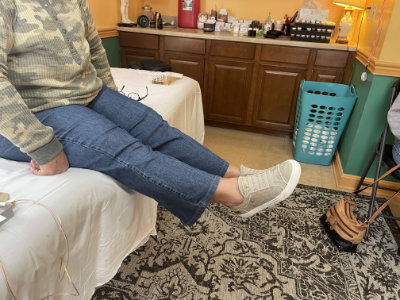
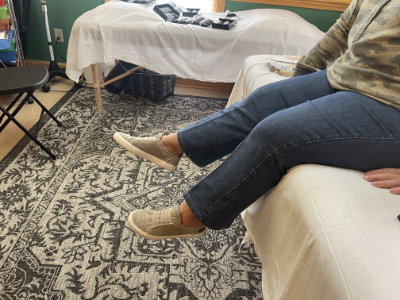
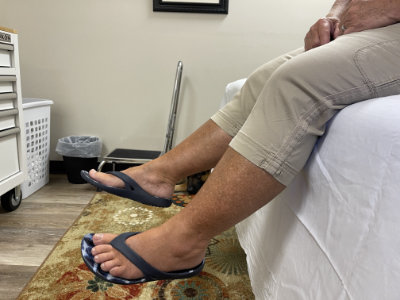
She agreed. I placed a tiny 3mm long needle in just the right spot aiming to simply reduce her pain and within a few seconds the knee had bent a little and the pain was greatly reduced! Encouraged and amazed, I continued on. Another needle, another increase in range of motion. 3 needles and her knee had gained a visible range of motion. Fast forward 2 months—her knee was now bending even more, almost to 90 degrees if she really focused on it, with no pain and no further treatment. We then decided to do the same thing for the opposite knee…same result.
An “impossible” case was getting nearly immediate and long-lasting relief. Sounds too good to be true, I get it! This is why I love what I do. Changing people’s lives for the better without drugs and working with the body, instead of against it. And that’s the point, helping people live better, one person at a time.
Follow Raja Wellness on Facebook and Instagram!
Follow Raja Goods on Instagram!
Integrative medicine solutions including acupuncture and East Asian Medicine have received much attention as successful therapies in their treatment providing pain relief, regulating the immune system, managing symptoms, and improving overall quality of life. In addition, acupuncture increases the chances of a successful and healthy pregnancy for women with autoimmune conditions.
Autoimmune diseases are a group of disorders in which the immune system attacks the body and destroys or alters tissues. There are more than 100 serious chronic illnesses in this category including rheumatoid arthritis, type 1 diabetes, lupus, thyroid disease, inflammatory bowel disease, Addison's disease, pernicious anemia, celiac disease, multiple sclerosis, myasthenia gravis, and Guillain–Barré syndrome.
The exact mechanisms causing these changes are not entirely understood, but bacteria, viruses, toxins, and some drugs may play a role in triggering an autoimmune process in someone who already has a genetic (inherited) predisposition to develop such a disorder. It is theorized that the inflammation initiated by these agents, toxic or infectious, somehow provokes in the body a "sensitization" (autoimmune reaction) in the involved tissues.
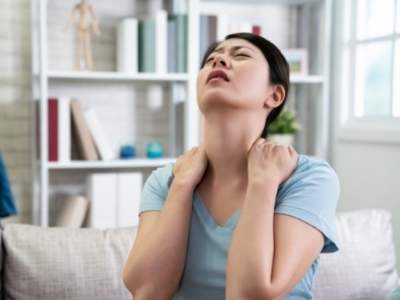
As the disease develops, vague symptoms start to appear, such as joint and muscle pain, general muscle weakness, possible rashes or low-grade fever, trouble concentrating, or weight loss. The following symptoms may indicate something wrong: numbness and tingling in hands and feet, dry eyes, hair loss, shortness of breath, heart palpitations, or repeated miscarriages can also be caused by an autoimmune response.
According to the American Autoimmune Related Diseases Association (AARDA), more than 24 million people in the US have autoimmune diseases and another 8 million have autoimmune markers without a clear disease diagnosis. Of these, more than 80% are women. Each disease appears uncommon on an individual basis but, as a group, the disorders make up the fourth-largest cause of disability among women.
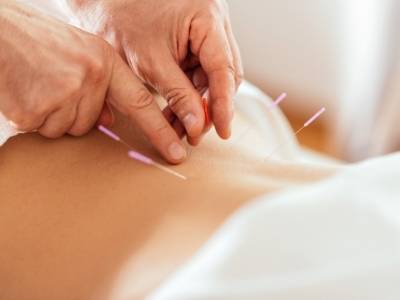
How Acupuncture Treats Autoimmune Disorders
According to East Asian Medicine theory, autoimmune disorders occur when there is an imbalance within the body systems related to immune functions. Imbalances can come from an excess or deficiency of yin and yang that disrupts the flow of Qi through the body. While these explanations sound strange, when the model is applied to the body, the treatments are very effective. Acupuncture is used to help the body restore balance; treating the root of the disorder, while specifically addressing the symptoms that are unique to each individual.
Clinical research has shown that acupuncture causes physical responses in nerve cells, organ function, and parts of the brain. These responses help the body rebalance. As a result things like blood pressure, body temperature, and the immune system return to a more normal and healthy state.
Acupuncture and herbal medicine provide safe and effective options for the management of autoimmune conditions and improving quality of life. Please contact our office with any questions.